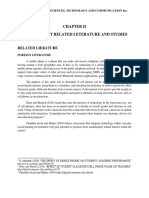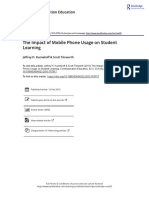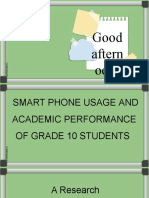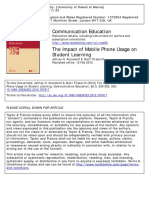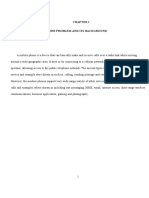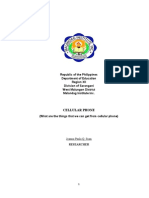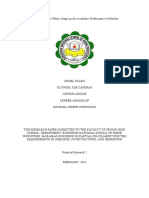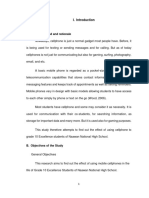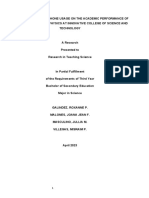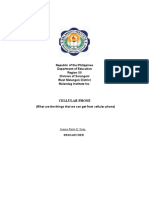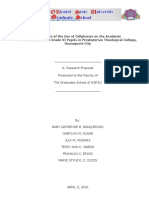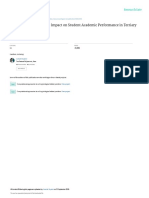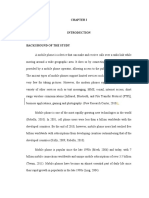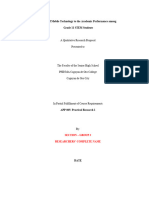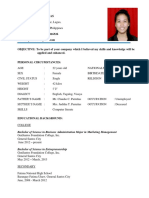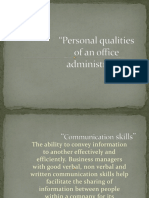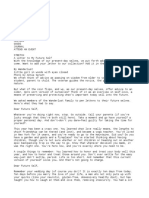0% found this document useful (0 votes)
58 views10 pagesChapter 1&2 Jsbdhs
This research proposal aims to investigate the impact of mobile phone usage on the social skills and academic performance of Grade 10 students at Claver National High School. It outlines the study's objectives, significance, and methodology, while also addressing the negative consequences of increased mobile phone usage. The proposal highlights the need for a deeper understanding of how mobile phones influence communication and academic outcomes among students.
Uploaded by
Maria GalgoCopyright
© © All Rights Reserved
We take content rights seriously. If you suspect this is your content, claim it here.
Available Formats
Download as DOCX, PDF, TXT or read online on Scribd
0% found this document useful (0 votes)
58 views10 pagesChapter 1&2 Jsbdhs
This research proposal aims to investigate the impact of mobile phone usage on the social skills and academic performance of Grade 10 students at Claver National High School. It outlines the study's objectives, significance, and methodology, while also addressing the negative consequences of increased mobile phone usage. The proposal highlights the need for a deeper understanding of how mobile phones influence communication and academic outcomes among students.
Uploaded by
Maria GalgoCopyright
© © All Rights Reserved
We take content rights seriously. If you suspect this is your content, claim it here.
Available Formats
Download as DOCX, PDF, TXT or read online on Scribd
/ 10

